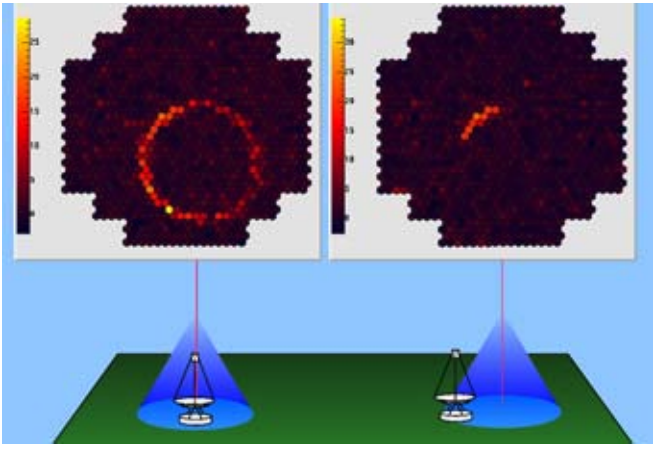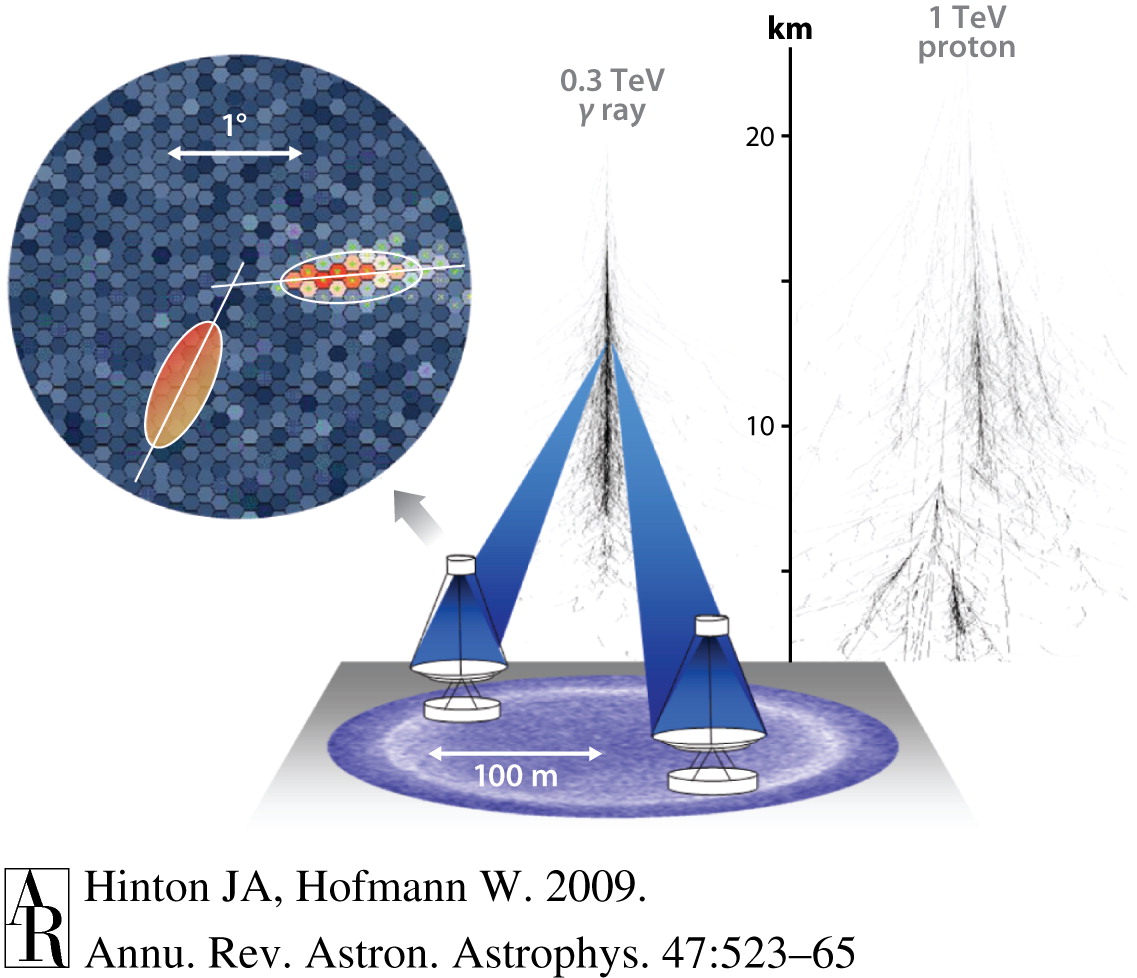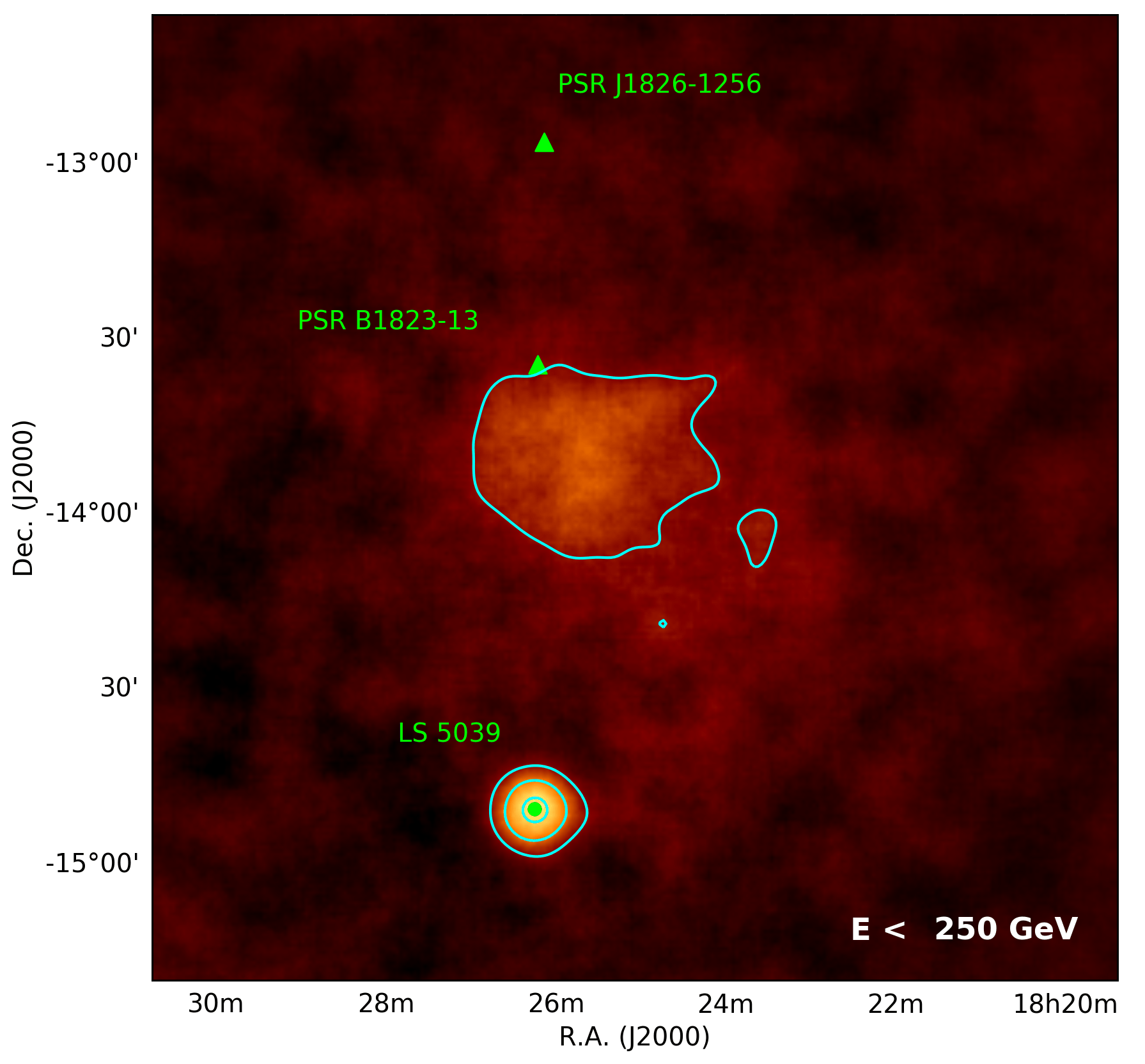Cherenkov Telescope Array at UZH

The Cherenkov Telescope Array
The Cherenkov Telescope Array (CTA) is a next generation facility for the detection of the most energetic gamma-rays from space, signatures of astrophysical particle acceleration.
CTA will comprise more than 100 telescopes of three different sizes; large, medium and small; with mirror diameters of 23m, 12m and 4m respectively.
At UZH, we were involved with the development of FlashCam, a prototype camera for the medium-sized telescopes of CTA. In September 2018, FlashCam was successfully tested on a prototype telescope. We were also involved in CTA software development for calibration and data analysis.
The UZH activities on CTA are now in the context of interferometry theory and led by Pransejit Saha. More information can be found in this webpage.
Gamma-ray Astronomy
Gamma-ray astronomy uses the observation of gamma-rays to study natural energetic particle accelerators in our universe. What kinds of systems accelerate particles and how? What energies do they reach? Which particle types are accelerated where?
Imaging Atmospheric Cherenkov Telescopes observe very-high-energy (~1011-1014 eV) gamma-rays indirectly, by detecting Cherenkov radiation from extensive air showers - cascades of energetic particles initiated by a gamma-ray interaction in the atmosphere.
Images of gamma-ray extensive air showers are elliptical. The orientation provides information about the gamma-ray direction; the image brightness corresponds to the gamma-ray energy. Using multiple telescopes to make stereoscopic observations improves the experimental performance.
Pulsar Wind Nebulae
The pulsar wind nebula HESS J1825-137 reduces in size with increasing energy. See the full study for more details (HESS Collaboration, Astronomy & Astrophysics 621 A116 (2019) - Highlight paper)
Pulsar Wind Nebulae are a common source class of astrophysical very high energy (VHE) gamma-rays.
Copious amounts of leptons (electrons and positrons) are produced in the immediate environment of the pulsar. These leptons interact with the surrounding medium to produce gamma-rays, detectable at Earth.
The leptons lose energy as they travel away from the source, leading to signature energy-dependent morphology, such as seen in the pulsar wind nebulae HESS J1825-137. This can be used to derive the particle transport mechanism and speed.
Muons with Cherenkov Telescopes
Muons produce easily identifiable ring-shaped images in Cherenkov telescopes when hitting the mirror dish. However, as the distance of the muon from the mirror dish increases, less of the ring is seen, making muons harder to identify.
 Full and partial muon rings as seen in a Cherenkov telescope. Figure from Völk & Bernlöhr, Experimental Astronomy 2009, 25, p.173
Full and partial muon rings as seen in a Cherenkov telescope. Figure from Völk & Bernlöhr, Experimental Astronomy 2009, 25, p.173
Muons form a constant brightness light source and are images of full rings used to calibrate the light collection efficiency of Imaging Atmospheric Cherenkov Telescopes.
Improving the identification of partial muon rings enables measurements of the muon production rate and distribution within extensive air showers, currently uncertain quantities.
The old web pages can be found here.

